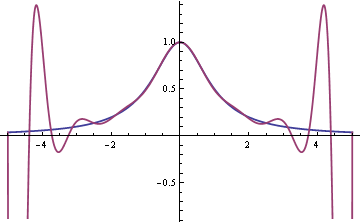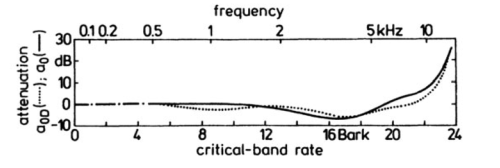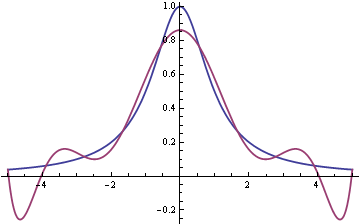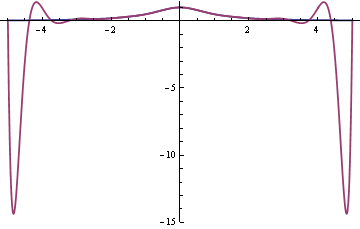Accuracy isn’t everything. Sometimes when you’re approximating a function you care more about matching a function’s qualitative behavior than matching its numerical values.
One example is interpolating monotonic data. Say your data show that increasing input always increases output. It’s likely you want a function that interpolates your data to have the same property and that you might sacrifice some accuracy to assure monotonicity. In a visual application, you might get a distracting wiggle in what should be a smoothly bending curve. In software used to control a physical device, it could lead to unexpected behavior, or even disaster, if an increase in input led to a decrease in output, even if it was a small decrease.
Linear interpolation preserves monotonicity: if in your data increasing x leads to increasing y, the same is true of a linear interpolation to the data. But for higher-order interpolation this isn’t the case. A simple example would be the three points (-1, 1), (2, 4), and (3, 9). The unique quadratic polynomial interpolating these three points is x², which is not monotonic in any interval containing 0. We’d like to have a smoother and more accurate [1] way to interpolate data while still preserving monotonicity.
It’s unlikely that a polynomial interpolating monotone data will be monotone. I suspect that given a set of monotonic data, it’s more likely that a polynomial spline interpolant will be monotone than a polynomial interpolant because the former is more flexible. Formulating this suspicion into a conjecture that could be settled theoretically, or even tested empirically, would be a non-trivial but interesting exercise.
A cubic spline interpolating monotone data is not necessarily monotone. However, there is a way to determine derivative conditions so that a Hermite spline fitting the data will be monotone. Fritsch and Carleson published an algorithm for this in 1980.
Related posts
[1] If the function sampled by your data is smooth, then in general a smooth approximation to the function will be more accurate than a piecewise linear approximation.







